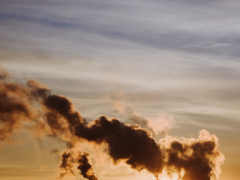Energy in the Netherlands at a tipping point
Dutch energy supply is at a tipping point. The share of renewable energy is expected to grow at an accelerated pace, up to 2023; in part due to the efforts of those involved in the Energy Agreement. Energy saving will also increase, up to 2020. And, although energy use will continue to decline, it will do so at a decreasing pace. After 2020, the reduction in greenhouse gas emissions and air polluting substances will slow down. Further progress towards a clean and reliable energy system in the long term, therefore, requires new policy input. A still to be formulated long-term perspective on climate and energy policy could push this in the right direction.
This is concluded in the second edition of the Dutch National Energy Outlook (NEV) 2015, by ECN, PBL and CBS, with contributions from the Netherlands Enterprise Agency (RVO). The NEV is an annual report presenting the developments around the Dutch energy system.
Impact Energy Agreement becoming clearer
Insight into the impact of the measures that were agreed on in the Energy Agreement in 2013 has increased. The current NEV’s estimation of this impact is more precise than in last year’s edition. Aspirations to save an additional 100 petajoules in energy by 2020 are still out of reach. However, the European energy saving target for the Netherlands – 482 petajoules over the 2014–2020 period – will be achieved.
The share of renewable energy in the energy mix is increasing. In 2014, it was 5.6%, and by 2020 the share is expected to reach 12.4%, which is in line with projections from the previous NEV report – although the current European calculation method predicts a lower share of 11.9% by 2020. In both cases, the European target for the Netherlands of 14% renewable energy by 2020 will not be achieved. But we will come close to the objective formulated in the Energy Agreement – 16% by 2023.
Employment in the energy sector on the increase
Investments in renewable energy are increasing and therefore so is employment in that sector. The energy-related employment is expected to grow from 153,000 full-time jobs in 2013 to 170,000 by 2020. Employment related to sustainability activities in the energy sector will then be greater than that in conventional energy.
As a result of the Energy Agreement, net employment in renewable energy and energy saving over the 2014–2020 period will increase by around 80,000 labour years, with an ambition level of 90,000.
Energy use will decrease and production will become more sustainable
Energy use in the Netherlands has been declining since 2004. It is expected to continue to do so, also in the future, albeit to a lesser degree; the decrease will take place particularly with respect to buildings and less in relation to traffic, industry or horticulture.
The share of renewable energy in power generation is projected to increase substantially; from 10% in 2014 to over one third in 2020. Compared to this, the share of renewable energy in heat supply is increasing less rapidly, but the attention paid to making this part of the energy supply more sustainable is increasing. The use of natural gas in heat supply (in the built environment, industry and horticulture) will decrease from 80% in 2013 to around 70% by 2030.
Reduction in greenhouse gases and air pollution to slow down after 2020
Greenhouse gas emissions in the Netherlands in 2013 had decreased by 11%, compared to 1990, and is projected to decrease further to between 18% and 19% below the 1990 level. Between 2020 and 2030, emission reduction will slow down to around 21% below the 1990 level. This slowdown is partly related to the projected increase in fossil-fuel-fired power generation in the Netherlands after 2022, due to a decreasing import and an increasing export.
In 2020, the Netherlands will more than comply with its European target for 2020 to reduce greenhouse gas from activities outside the European Emissions Trading Scheme. The 2020 emission targets for air polluting substances will also very likely be achieved. After 2020, emissions of nitrogen oxide will continue to decline, but less for the other substances.
Energy bill expected to go up
Household energy bills will continue to go down this year, but are expected to go up in the coming years, in part due to rising natural gas and power prices. The National Energy Outlook expects the average energy bill in 2020 to be around € 1800 in real terms, which is € 150 higher than it is today, but very similar to that of 2010.
R&D investments Dutch Government lower than elsewhere
In the field of innovation, the balance between research, development and demonstration efforts continues to increase, but this is not the case for all technologies. Innovations regarding bio-energy and carbon capture and storage can make a substantial contribution to climate objectives, but they lack strong, supportive impulses from government and private parties. The application of public funds in R&D has been variable over the past years and on the low side, compared to the international average. Not only in the Netherlands, but also in the rest of Europe, private investments in starting energy-related enterprises have decreased considerable since 2010.
Long-term objectives needed for energy and climate
The Netherlands is expected to become a net natural gas importer around 2030. The increasing dependence on fossil fuels from abroad underlines the importance of energy policy for the period after 2023. In neighbouring countries, long-term objectives are already helping to structure national policy on energy transition, priority setting and mutual collaboration with surrounding countries.




